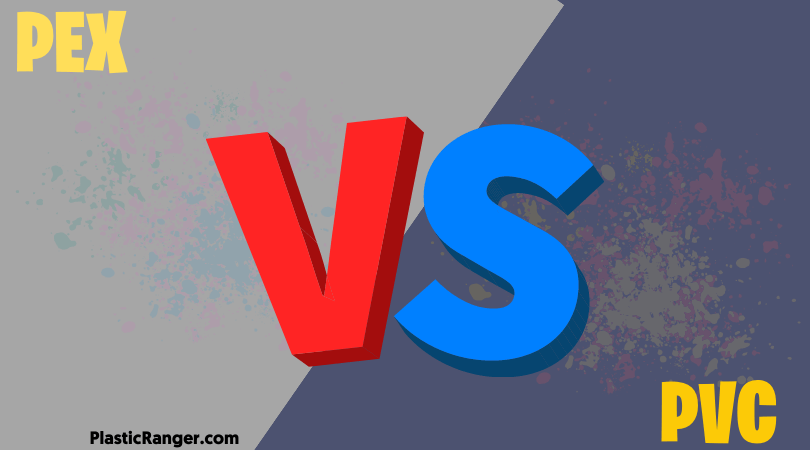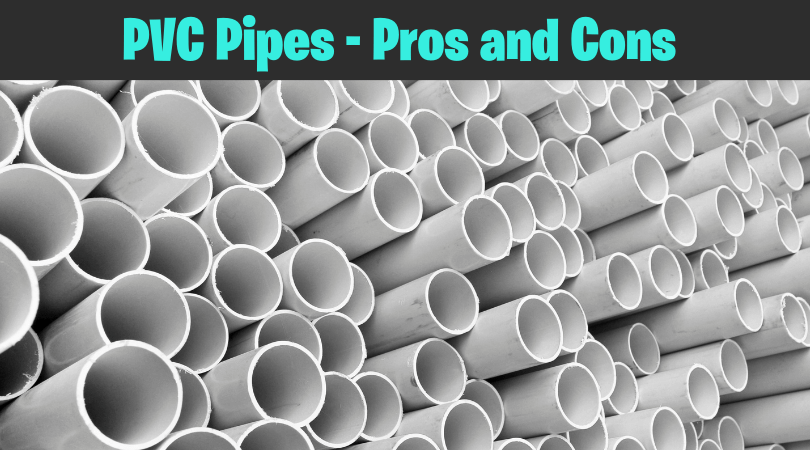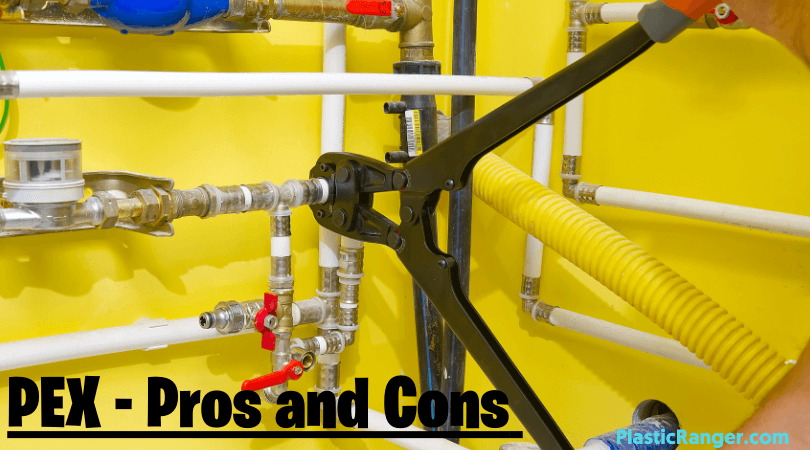Greetings, everyone; I trust you’re all in good health and spirits. I’m thrilled to present a comprehensive comparison between PEX and PVC today. This guide will assist you in determining the most suitable material for your plumbing requirements.
PVC VS PEX
PEX pipes are great because they can bend and won’t break if the water inside freezes. They are usually used for carrying fresh water. On the other hand, PVC pipes are hard and can last a long time. They are mainly used for carrying waste water away because they are strong and don’t rust.

Whenever there’s a situation where you face a dilemma about choosing PEX or PVC, rather than making an abrupt choice, you should go for the one that suits your needs the best. Determining which one, PEX or PVC, is best for you is not rocket science, but there are a few factors that should be taken care of for perfect results.
PEX pipes are made from Cross-Linked Polyethylene, whereas PVC pipes are made from polyvinyl chloride. Both are fantastic options for almost all kinds of piping projects. However, there are, in total, five options for piping – PVC, PEX, ABS, CPVC, and Copper. Each option is great at something, and certain things are not.
When choosing, keep your goals in mind, which fits your need the best, the pros and cons of each, and think how long you want to use the pipes and where they will be stationed. Consider these points and act accordingly; you’ll choose the best thing for you.
What is PEX?
Many households use PEX plumbing systems to supply hot and cold water PEX piping is manufactured by HDPE and extruded in a tube. This system of piping was introduced in the US just 40 years ago. It’s catching up quickly with the competition.
What is PVC?
PVC piping is the most common type used in household drain, waste, or vent (DWV) piping. For a long time, it replaced metal and copper piping. Its strength and durability made PVC one of the most used thermoplastics in the world.
PEX VS PVC: Heat and Cold
When we’re talking about pipes, how they respond to temperature changes—both hot and cold—is an essential thing to think about. PVC pipes are good at dealing with water under high pressure but have a problem with hot water.
If hot water flows through PVC pipes, it’s not suitable for the pipes, and they shouldn’t be used for hot or drinking water because of that.
Another thing to keep in mind is that PVC pipes aren’t bendable. They need special connectors to go around corners, making them more likely to leak. Plus, if the water inside freezes, the pipes are at a significant risk of bursting open. PEX pipes, on the other hand, don’t have these issues.
They’re good with hot water and even keep some of the heat. So, if you use a lot of hot water, PEX pipes are a better choice for you. What’s cool about PEX is that even if the water inside them freezes, these pipes won’t burst open.
Interesting Read – ABS Vs PVC | The Complete Guide
PEX VS PVC: Costing
In the discussion about PVC vs PEX pipes, cost becomes particularly nuanced and intriguing, as the price is not fixed and can vary widely. The price you’ll end up paying for either kind of pipe hinges on the specific grade or quality you opt for, tailored to your specific needs.
Additionally, the longevity of each type of pipe has a subtle yet significant influence on its overall cost-effectiveness. When evaluated side by side, PVC pipes generally have the advantage of being more readily available and less expensive.
On the other hand, PEX pipes share similarities with CPVC pipes in terms of material properties. However, if you’re willing to spend more, you can find PEX options that are as costly as copper pipes. As for durability, PEX pipes tend to have a life expectancy roughly equivalent to copper pipes, around 40 to 50 years old.
In contrast, PVC pipes can boast a substantially longer lifespan. When appropriately maintained, PVC pipes can last between 75 and 80 years.
One noteworthy point is the recyclability of PVC pipes. Once a PVC pipe has reached the end of its functional life, it can be recycled. This is a feature not shared by PEX pipes. Conversely, CPVC pipes have a shorter lifespan of about 20 to 25 years and are generally pricier than their PVC counterparts.
Lastly, another crucial element that contributes to the overall cost of your piping system is the complexity of the installation process. Factors like the placement location of the pipes and the ease or difficulty of the installation play a vital role.
For example, if you’re replacing pipes already embedded in a wall, the cost will skyrocket because you’ll need to demolish part of the wall to remove the old pipes and install new ones.
Pros and Cons of PVC Pipes
Pros
Outdoor Safety: PVC is suitable for outdoor usage – even above ground. You have to cover the exterior of the piping with water-based paint.
Frames & Fittings: It is available in any length or size and has various stiff frames and fittings. In addition, it doesn’t need any wood or metal framework to support it, and like all the other options, it will not corrode or rust.
Cost-Effectiveness: PVC is the cheapest piping option out there.
Engaging Read – HDPE Pipe Sizes and Dimensions | A Complete Analysis
Cons
Leak Risk: Rigid PVC pipes increase the risk of leaks as every connection will need an elbow. You’ll also run the risk of cracked pipes if PVC freezes.
Temperature Limitations: According to ASTM, PVC plumbing cannot be used above 140 F, only for DWV Applications for bathroom applications, including hot water. You must install CPVC, which is considered safe up to 200 F°.
Pros and Cons of Pex Pipes
Pros
Easy Installation: Their flexibility makes installing PEX pipes easier than PVC pipes. It makes the plumber’s job easy as they have to create fewer connections because PEX can bend to accommodate changes in direction. The benefit for you is the fewer potential sources of plumbing leaks. The small number of connections necessary will be made using crimp fittings or cold expansion—no need to use any glue, which will derisk the chances of it leaching into the water.
Freeze Resistance: It can withstand freezing efficiently (again, its flexibility lets the piping diameter expand when the water pressure changes). You will be less likely to end up with burst pipes in layman’s language.
Compatibility with Metal Pipes: Although PVC pipes are compatible with metal pipes, PEX pipes are comparatively better and connect better.
Safety: All PEX plumbing pipes must be certified to cater to ANSI/NSF Standard 61 for drinking water safety to verify that they are safe for potable water.
Cons
Price: PEX pipes, as established earlier, are more expensive than PVC pipes. This factor makes the PEX vs PVC comparison more confusing (however, it will be balanced out with lower installation cost).
UV Intolerance: PEX is not tolerant of prolonged exposure to sunlight, limiting its application possibilities. It’s fine if installed indoors but can’t be kept above ground if installed outside.
What About CPVC and Copper Pipes?
There are other lucrative piping options other than PVC and PEX. Let’s have a look at their pros and cons.
Fascinating Read – What is PVC Fittings? | What is PVC Connection? | The Definitive Guide
CPVC Pipes: Pros
Safe for Drinking Water: CPVC pipes are made from Chlorinated polyvinyl chloride instead of just polyvinyl chloride. That additional layer of chlorine makes it more durable and safe for drinking water.
Ideal Flowrates: CPVC pipes have a very smooth surface in the interior, allowing them to resist scaling and adulteration. This decreases the friction pressure of the liquid flowing by a substantial margin. Therefore, CPVC pipes allow more liquid to flow in pumps with more cross-section areas, making them more energy-efficient.
Low Thermal Conductivity: CPVC pipes maintain the surface temperature of the pipe at a low temperature, thereby reducing the risk of burns to maintenance and operations personnel. The low thermal conductivity also minimizes the loss of heat. CPVC pipes can also handle a wide variety of temperatures.
CPVC Pipes: Con
The added chlorine cover, which makes CPVC pipes more durable, is a bit more expensive than PVC, so it is not used much.
Copper Pipes: Pros
Earthquake-proof: Copper will bend sooner than it breaks, making copper pipes the best option if you are for houses in earthquake-prone areas. If your home is damaged in the earthquake, you have one less thing to worry about.
UV Resistant and Withstanding Elevated Temperatures: Copper pipes do not corrode and can easily handle extreme temperatures. They are UV resistant and also resist bacteria buildups helping to keep your water clean. Because of this, it can be placed even in places with direct sunlight.
Better Looking: This might be useful for some people or not useful, but copper piping looks much better than plastic piping, usually white.
Copper Pipes: Cons
Contaminated Water: Although copper piping keeps your water free from bacteria, there are healthy chances some of that copper is more than likely to end up in your water. That makes the water a little difficult to digest, and many experts have suggested that copper in your water is supposedly bad for your health.
Not Easy to Work With: Finding a good plumber willing to work with copper piping is way more complicated than PVC vs. PEX piping.
Your Plumbing Might Need To Be Replaced
We usually don’t think about our plumbing unless we notice a leak or something else drawing attention to it. At this point, you not only have to think about your pipes but also have to pay for the water damage. At this point, you should replace your pipes before they get old and leaky, so you can avoid paying more.
When moving into a new home, plumbing is one of the few things you should learn about. It would help if you understood what pipes are placed there and how they were installed. Knowing the information will give you an idea of when their lifespan will be over. It’s tricky, I get it, but it’s doable, and it will make you act on it before something goes haywire.
Replacing the pipes has several benefits, not just limited to preventing leaks, But it will provide two more advantages. Most of the time, the new pipes installed will help the water flow faster since the old pipelines can contain build-up.
Clearing out the build-up will also make your water safer to drink, and if you’re selling, it will also add to the home’s value.
Interesting Read – CPVC VS PVC | Difference Between PVC and CPVC
The Installation Process

I’ll keep the installation process straightforward. No matter what you need, PEX, PVC, or something else, a specific procedure must be used for a new piping installation. First, get the project estimate from at least two plumbers to know what you will be charged for the project you have on hand.
If the plumbing process includes removing a part of the wall, you should count on the project taking at least a few days. Plan for this, if possible, and pick a few days that would be best for you.
You should expect to go closer to five days for the job for extended work. It would help if you also verified that the plumber you’re hiring has a license to work at your home. If your plumber doesn’t have a license, it will create problems with the insurance companies. They will not pay for any faulty pipelines.
Some plumbing companies have a person on their staff who takes care of your walls before and after. However, once the new pipe has been installed, you must get it inspected officially. Yes, doing this will take a few extra hours, but it will save you significant money and time later if you have any problems.
Once this has been done, you must close everything back up and clean the area. A salient tip is setting up a fan to blow up the site and help the area dry up quickly.
FAQs

Below are the frequently asked questions on pex pipe vs PVC. Let’s dig deep to know more.
Does PEX pipes need to be insulated?
Yes. PEX pipes are better at withstanding freezing temperatures than other materials, but they don’t make them freeze-proof. If the temperature drops below 20 Fahrenheit, your pipes have a good chance of freezing.
How much weight can PVC pipe hold?
Most PVC pipes can hold at least 28 pounds of weight before they start bending. However, sometimes longer PVC pipes begin to bend under their weight. A prime rule of thumb is never to use PVC pipes to hold larger quantities of weight, especially if you don’t want them to become stiff.
Which is the best glue for PVC?
The best adhesives for bonding PVC are Cyanoacrylates UV curable adhesives because one of the substrates must transmit UV light.
What type of glue do you use for PEX pipe?
Unlike PVC, PEX pipes do not need glue or cement for joining. Instead, they can be combined with push-to-connect fittings, metal inserts, or plastic fittings for a watertight seal.
How long are PVC and PEX pipes in size?
Ans. Standard PVC and PEX pipes are 10 feet to 20 feet long.
Suggested Read
- Top 10 PVC Manufacturers and Suppliers in the World
- ABS Pipe Sizes & Dimensions For Schedule 40 and 80
- PVC Pipes: Schedule 40 VS 80
- What is Processing and Drying Temperatures of Plastics
- Top 6 Injection Molding Machine Manufacturers
- Antistatic vs. Static Dissipative Plastics | Which One to Choose?
Summary
Both PEX VS PVC serve unique purposes in plumbing. PEX, with its flexibility and freeze-resistance, is a superb choice for water supply lines, facilitating easy installation and longevity. On the other hand, PVC, being rigid, durable, and corrosion-resistant, is optimal for drain, waste, and vent pipes. Hence, the choice between PEX and PVC should be guided by the specific requirements of your plumbing project.
Thank you for your time spent reading. I warmly encourage you to express your thoughts and feedback in the comment section below.
Wishing you a wonderful day ahead.
Quick Navigation



